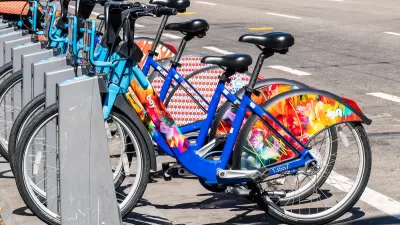An 800-mile HOT lane 'network' proposed for the Bay Area is now a bill in the state legislature. The MPO estimates it will reduce congestion and emissions while raising funds for transit. U.C. Berkeley's Pravin Varaiya insists it will lose money.
The Metropolitan Transportation Commission "estimates that turning the Bay Area's 500 miles of carpool lanes into toll lanes, along with adding 300 miles of new toll lanes, will generate $6.1 billion in profit over the next 25 years.
But one UC Berkeley engineering professor who has studied the effectiveness of carpool and toll lanes says the idea is wildly optimistic, and he predicts it will ultimately waste huge amounts of taxpayer money.
For years, professor Pravin Varaiya of UC Berkeley's electrical engineering and computer sciences department has pored over extensive amounts of CalTrans data. He concludes that the new toll lanes will lose money for two main reasons:
* In less-congested areas, not enough people will use them.
* On the Bay Area's more-congested freeways, heavy demand from carpoolers won't leave enough room for those single-occupancy vehicles that would pay the new toll.
"I'm willing to bet that the toll lanes won't be able recover operating costs, let alone the capital costs," he said.
Thanks to Justin Horner
FULL STORY: Bay Area Toll Lanes Could Lose Money

Planetizen Federal Action Tracker
A weekly monitor of how Trump’s orders and actions are impacting planners and planning in America.

Restaurant Patios Were a Pandemic Win — Why Were They so Hard to Keep?
Social distancing requirements and changes in travel patterns prompted cities to pilot new uses for street and sidewalk space. Then it got complicated.

Map: Where Senate Republicans Want to Sell Your Public Lands
For public land advocates, the Senate Republicans’ proposal to sell millions of acres of public land in the West is “the biggest fight of their careers.”

Orange County, Florida Adopts Largest US “Sprawl Repair” Code
The ‘Orange Code’ seeks to rectify decades of sprawl-inducing, car-oriented development.

Maui's Vacation Rental Debate Turns Ugly
Verbal attacks, misinformation campaigns and fistfights plague a high-stakes debate to convert thousands of vacation rentals into long-term housing.

San Francisco Suspends Traffic Calming Amidst Record Deaths
Citing “a challenging fiscal landscape,” the city will cease the program on the heels of 42 traffic deaths, including 24 pedestrians.
Urban Design for Planners 1: Software Tools
This six-course series explores essential urban design concepts using open source software and equips planners with the tools they need to participate fully in the urban design process.
Planning for Universal Design
Learn the tools for implementing Universal Design in planning regulations.
Heyer Gruel & Associates PA
JM Goldson LLC
Custer County Colorado
City of Camden Redevelopment Agency
City of Astoria
Transportation Research & Education Center (TREC) at Portland State University
Camden Redevelopment Agency
City of Claremont
Municipality of Princeton (NJ)




























